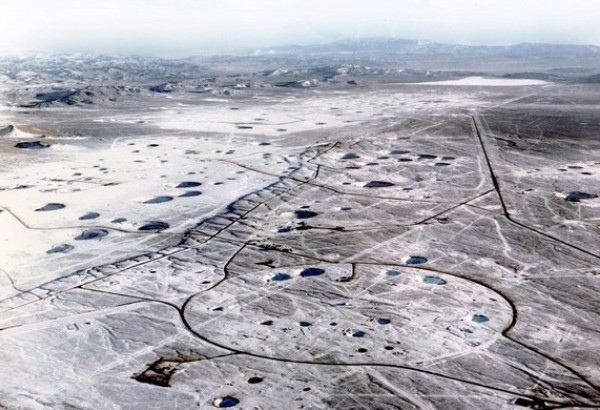
© National Cave And Karst Research Institute/APUnlike the Carlsbad Caverns, collapsed brine wells like this one in nearby Artesia, N.M., aren't natural.
Parts of the New Mexico town near Carlsbad Caverns National Park could collapse because of irresponsible extraction practices by the oil industry.
"U.S. 285 south subject to sinkhole 1,000 feet ahead," reads a bright yellow sign along the stretch of highway heading through Carlsbad, N.M.
Normally a motorist driving through the area might not find a sign like that unusual. The city is, after all, home to Carlsbad Caverns National Park, a network of some of the largest natural caverns in North America. But on this occasion, the sign's sharp colors make the message clear: what's happening in Carlsbad is not natural.
In fact, the massive sinkhole currently running through the center of town was created by the oil industry. As MSNBC reports, it was formed over three decades as oil field service companies pumped fresh water into a salt layer more than 400 feet below the surface and extracted several million barrels of brine to help with drilling.
If it collapses, the unnatural cavern is likely to take with it a church, a highway, several businesses and a trailer park. Massive fissures currently cleave through town, and one business owner has said that structural cracks have even formed in his store.

